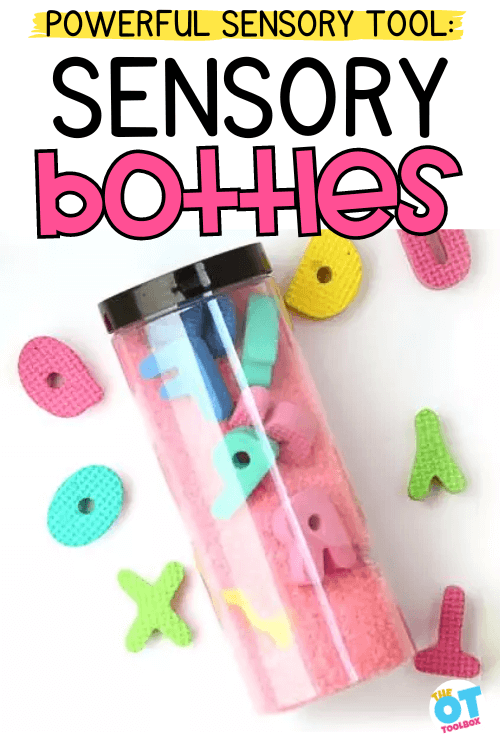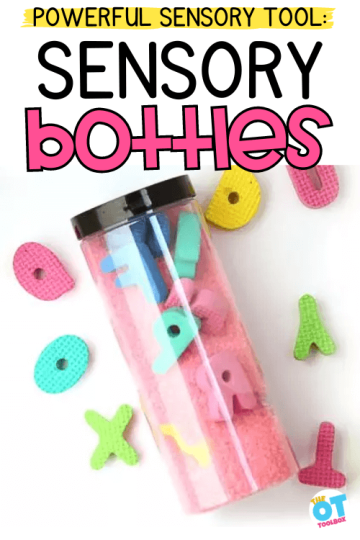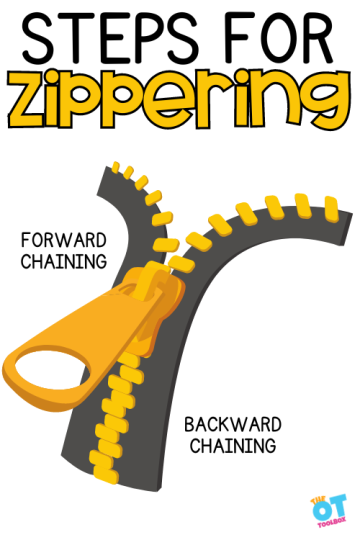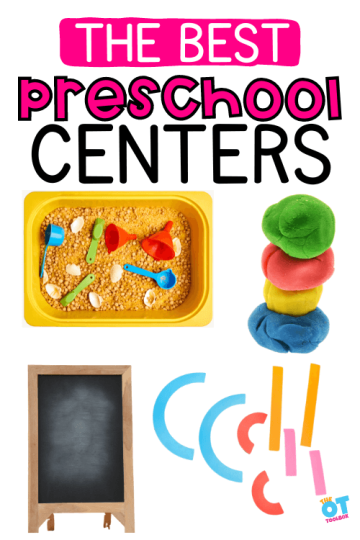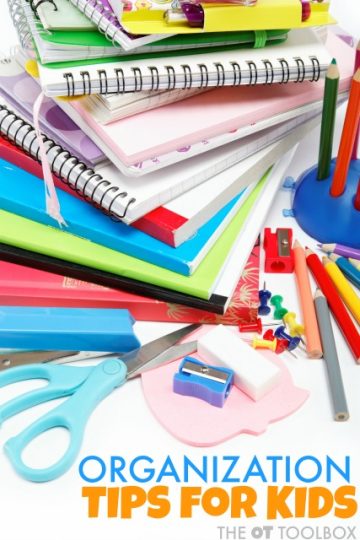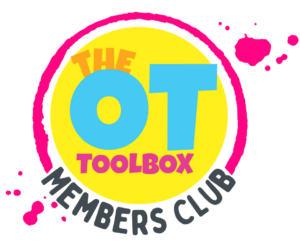Do you know how to use graph paper to meet specific OT goal areas? We can use grid paper in occupational therapy sessions to develop many goal areas. Did you ever see a student using graphed paper in occupational therapy and wonder about the pre-gridded paper purpose in supporting goals? Not only is graph paper a type of adapted paper for some, it can be a tool too! There are so many different reasons to use this type of paper to support specific handwriting or visual perception needs. Here we are discussing using graph paper and why this type of therapy tool can be helpful.
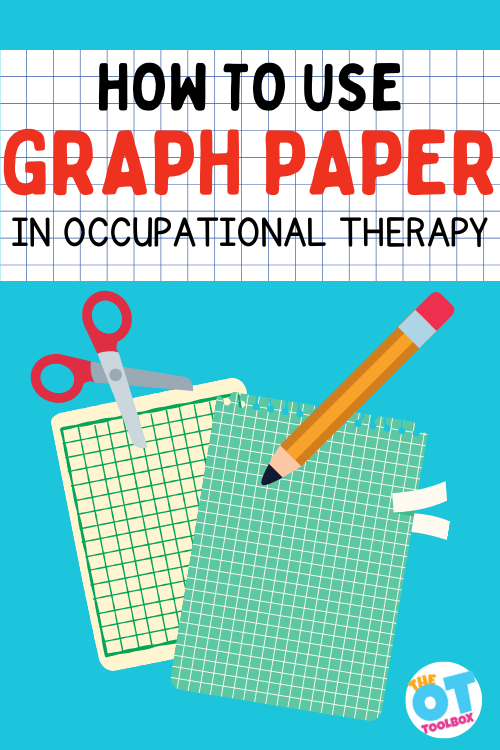
Graph Paper Purpose in OT
Graph paper comes in many sizes! Specific activities can be easily graded in difficulty just by making it easier when boxes are large and of course more challenging as boxes become smaller in size.
Graph paper can be used as a tool to support many areas of development:
- Forming letters with correct size
- Spatial awareness in handwriting
- Letter spacing in words
- Spacing between words in sentences
- Size awareness in handwriting
- Visual perceptual skills
- Pinch and grip strength (folding and tearing paper)
- Visual motor skills
- Aligning columns
- Forming pre-writing lines
- Math skills
- Drawing activities
- Handwriting
- Scissor tasks
- Executive functioning tasks
How to Use Graph Paper
Try these paper activities in occupational therapy sessions or at home. Here are ideas on using graph paper to meet specific goal areas in OT or at home:
Graph Paper for Visual Perception
Tasks like forming letters the correct size, using margins, aligning lists or columns are all visual perceptual areas of handwriting. You can use grid paper to support these needs.
Graph paper is great to use for math problems! Simply place one number in each box and line them up so numbers are easily read and there’s a spot for each number in your answer. Your math work just might be easier to do and it will for sure be easier to read.
Graph paper for visual motor skills
Related to the visual perception aspect is the contribution of motor skills. In order to copy shapes, copy and write words, recreate graphs, plot lines, etc. one needs visual motor skills.
Graph paper can be used to address visual motor skills with these activities:
- Create a plot diagram. Use a ruler to connect lines.
- Copy shapes and designs using the grid blocks on the paper.
- Form block letters with or without a model.
- Cut shapes and trace the shape using the graph paper template.
- Create symmetry drawings by folding the graph paper in half.
- Create pencil control exercises to work on precision with pencil use.
I love to use graph paper for imitating drawings. I will draw an odd shape or maybe even a specific item and ask a student to copy my drawing by counting and using the boxes to replicate my shape. Students can also draw their own shape and try to “stump” the therapist or other player.
If the adult/other player is creative, s/he can label the boxes with letters and numbers across the top and side edges (kind of like a BINGO board) and the student is asked to fill in box A-1, or C-3, etc. to create a picture that will mysteriously become visible at the end. The one helping here must do a little homework on their own first to make sure the colored in boxes will actually create a picture.
Draw shapes–
The student can also be instructed (verbally or with written cues) to draw shapes, lines, letters, etc. in certain boxes or at the intersection of certain lines (e.g. put a yellow circle in box A-1, or draw a tree at line F-7 or similar).
This helps to follow written instructions, draw a specific shape, and locate the correct space on the graph paper. Be creative and make it fun!
Graph paper Letter Size Activity-
Finally, it would be an injustice to graph paper if I didn’t mention the use it can play in creating letter boxes for a box and dot handwriting task. Your student may already be familiar with this through OT sessions.
Graph lines can be used to outline the space in which a letter sits, using one single box for lower case letters. Upper case letters and lower case tall letters: (t, d, f, h, k, l, b) will need to include the box ON TOP to make it a one wide by a 2 tall defined space.
Lower case letters that are descending below the line, or tail letters (q, y, p, g, j) must include the box BELOW, making it also a one wide by 2 space, but the box on bottom goes below the line on which the letters are written.
Missing letter activities-
Making up a “key” of words, or a game, have the student place the letters in the proper defined word space that has letter boxes outlined or maybe even just the word outlined. This may be a fun way to practice spelling words.
Cutting activity-
If nothing else, you can always use graph paper to practice cutting on the lines, creating a colored picture, making paper air planes, or crumpling into a ball to play a game. Graph paper is one style of cutting paper with a graded resistance we talk about in our scissor skills crash course.
I’m sure your student can think of many non-traditional things to do with it on his/her own!
If you don’t have graph paper on hand, below are resources I have found which may be helpful.
More handwriting tips
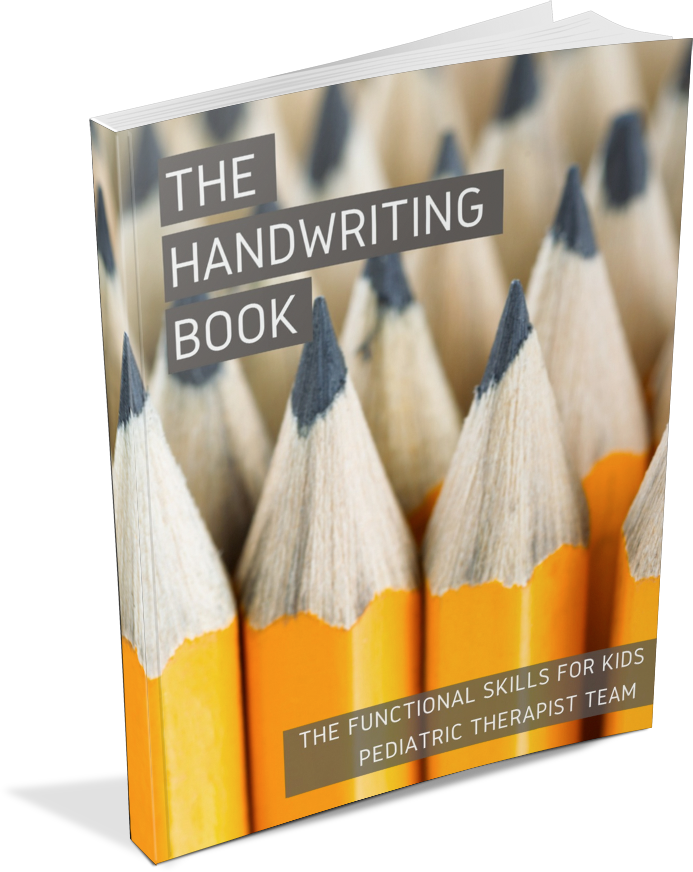
The Handwriting Book covers everything you need to know about handwriting, guided by development and focused on function. This digital resource is is the ultimate resource for tips, strategies, suggestions, and information to support handwriting development in kids.
The Handwriting Book breaks down the functional skill of handwriting into developmental areas. These include developmental progression of pre-writing strokes, fine motor skills, gross motor development, sensory considerations, and visual perceptual skills. Each section includes strategies and tips to improve these underlying areas.
- Strategies to address letter and number formation and reversals
- Ideas for combining handwriting and play
- Activities to practice handwriting skills at home
- Tips and strategies for the reluctant writer
- Tips to improve pencil grip
- Tips for sizing, spacing, and alignment with overall improved legibility
Click here to grab your copy of The Handwriting Book today.

Colleen Beck, OTR/L has been an occupational therapist since 2000, working in school-based, hand therapy, outpatient peds, EI, and SNF. Colleen created The OT Toolbox to inspire therapists, teachers, and parents with easy and fun tools to help children thrive. Read her story about going from an OT making $3/hour (after paying for kids’ childcare) to a full-time OT resource creator for millions of readers. Want to collaborate? Send an email to contact@theottoolbox.com.

